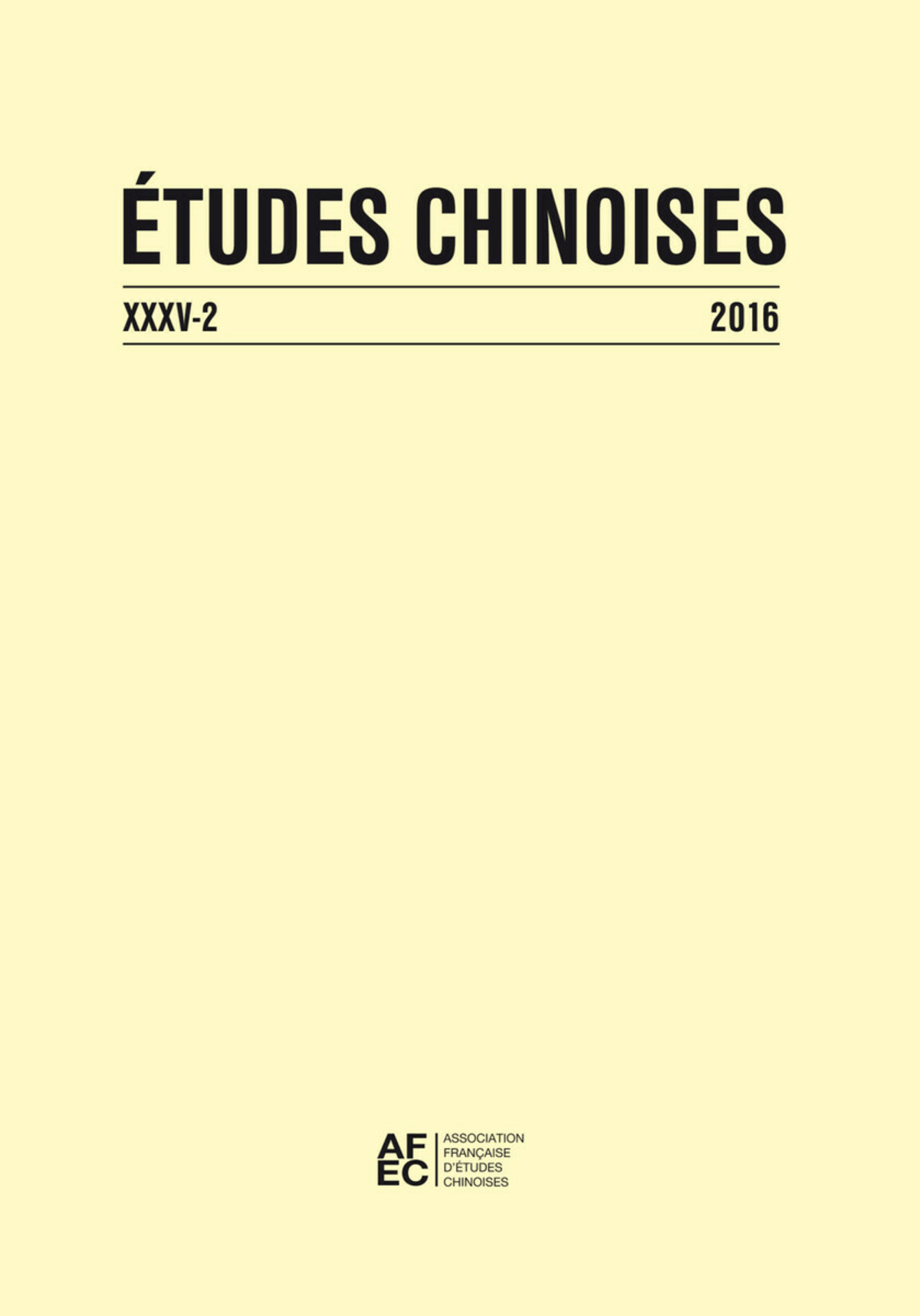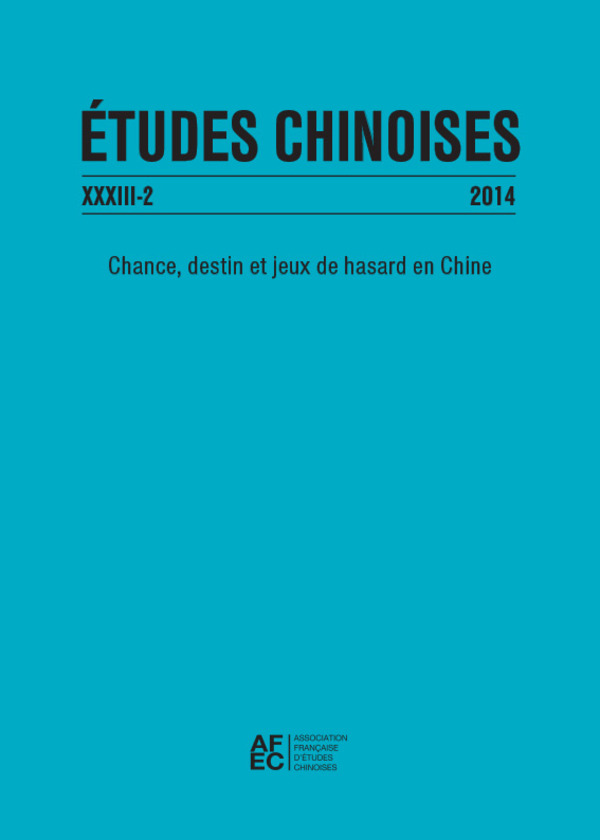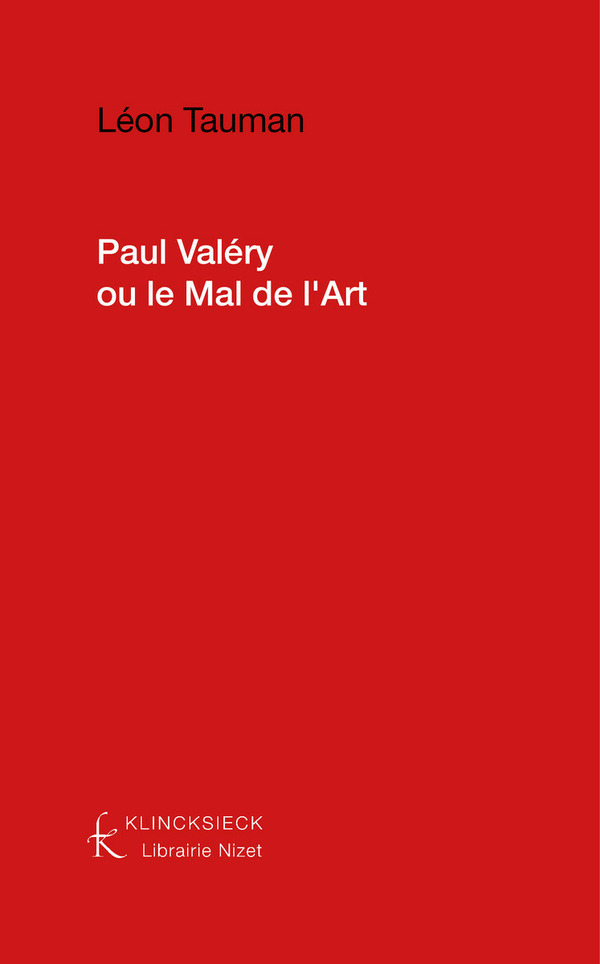Études chinoises XXXV-2 (2016)

- CCVIII + 208 pages
- Livre broché
- 15 x 21 cm
- Chinois, Français
- Études chinoises
- Parution : 28/05/2017
- EAN13 : 9782252040140
- Code distributeur : 53525
Présentation
Gilles Boileau: Remarks on Several Ritual Transformations and Textual Alterations in the Daodejing
This article examines several variants in the text of the Laozi in light of new archaeological sources (Mawangdui, Guodian, as well as the Han version recently published by Peking University). The topics covered are as follows: the use and transformation of ritual allusions as part of the philosophical discourse specific to the Daodejing; the theme of he/huo 和 (harmony) versus tong 同 (confusion), as originating in the sacrificial rites; the potential of the Guodian manuscripts to reveal a missing link in the question of a Legalist influence on the text's historical evolution; and, finally, the geographical trajectory of the text as approached vis-à-vis the historical enigma of the text's legendary author. From there, this article will present paleographic evidence that would seem to indicate that one of the final steps in the formation of the Laozi may have occurred in the Qin.
Valentin Philippon: Biographies of the Four Great Masters of the Jin and Yuan Dynasties (Jin Yuan si da jia 金元四大家, 1115-1368): Genres and Issues in the Biographies of Physicians in the Twenty-six Standard Histories of China (Ershiliu shi 二十六史)
As early as the biographical chapters of the Shiji 史記 of Sima Qian 司馬遷 (ca. 145-86 BCE), a distinction is drawn between the practice of medicine (yi 醫) and that of other knowledge and techniques related to health care. Since that time, medical practitioners are generally very well represented in the biographical sections of the Twenty-six Standard Histories (Ershiliu shi 二十 六史). This research note is based on the example of the biographies of those we now remember as the Jin Yuan si da jia 金元四大家 (Four Great Masters of the Jin and Yuan dynasties) in order to illustrate the great heterogeneity of the content that the biographies of physicians in the official historiographical records can present—biographies which constitute the corpus my thesis is based on.
Li Shiwei: Narrative and Songs in The Plum in the Golden Vase: David Tod Roy and André Lévy and the Issues of Intertextuality in their Translations of the Cihua 詞話 Version of the Jin Ping Mei 金瓶梅
This research note seeks to analyze the different translation strategies of two sinologist-translators, David Tod Roy and André Lévy, when confronted with a work as complex as the Jin Ping Mei 金瓶梅, and in particular their different choices regarding the translations of qu 曲 (lyrics or songs). I first analyze the uses and functions of qu in the cihua 詞話 version of the Jin Ping Mei and then present the different points of view of the translators concerning the ideological and aesthetic values of the author and the organization of his narrative. The note also discusses their strategies when confronted with the difficulties of translation of the intertexts structured around the qu as well as the potential effects of these translation choices on their readers. Finally, the note proposes some hypotheses concerning the reasons that motivated these choices.
Fleur Chabaille-Wang: The Thwarted Expansion of Foreign Concessions in China as a Window into Urban Society in the 1910s
This research note aims to put into perspective and to connect the setbacks in the territorial expansion of foreign concessions in Tianjin, Shanghai, and Hankou in the 1910s: the Laoxikai Incident (1916–1917), in Tianjin, which was a protest movement movement against the annexation of the Laoxikai district by the French Municipality; the failed attempts of the Shanghai Municipal Council (SMC), in Shanghai, to officially extend the International Settlement into the Zhabei and into the western external roads area (1913–1917); and the demise of the joint expansion project, in Hankou, initiated by the city’s five concessions (1911–1914), adumbrating that of the German Concession in 1916. This litany of reversals in the territorial development of concessions invites us to inquire about their nation-wide implications. First, the cross-analysis of the three treaty ports regarding the issue of territorial expansion sheds new light on the concession "system" and the complexity of its status. Second, it reflects the territorial and diplomatic aspects of the foreign presence in China as well as certain political and social changes particular to Chinese urban society in the 1910s. Among these, a special emphasis will be placed on local elite networks’ influence upon protest movements and their expression of a "modern" nationalism.
David Serfass: The Japanese Occupation as a Subject for the History of the Chinese State: The Example of the Rural Pacification Campaign by the Wang Jingwei Government, 1941-1945
The rural pacification campaign (qingxiang 清鄉) carried out in the occupied zone between 1941 and 1945 by the collaborationist government in Nanjing with the support of Japanese troops included a military component aimed at eradicating resistance and a political component intended to perpetuate control over the local population through semi-bureaucratic structures such as the baojia 保甲 system. By following the implementation of this long-standing administrative technique, the present note proposes to re-evaluate the position of pro-Japanese governments in the history of the modern Chinese state, while repositioning the occupation of China within the context of the Japanese colonial enterprise.
Zhou Mingchao: The Children of Rural Migrant Workers between City and Village: Nostalgic Rhetoric and Identity Strategies in the Face of Stigma
Based on an ethnographic survey conducted in a primary school designed to accommodates the children of rural migrant workers in Hangzhou, this study offers a reflection on the way that students (age 10 to 14) targeted by the institutionalized category “children of rural migrant workers” and enrolled in the city assimilate these two places – the city (chengshi 城市) and the place of origin (laojia 老家) – via the maintenance of two links – that to the past, with the return to the natal village of the parents, and that to the present, developed within neighborhood networks in the city. On the one hand, we will analyze their nostalgic discourse of laojia, which we shall consider not only in its emotional and sentimental dimensions, but also in its strategic and instrumental use at the heart of the school. On the other hand, we will take up the identity strategies deployed by these students in the face of the stigma related to the place where they live in the city.
Anny Lazarus: Gao Minglu, Critic and Art Historian, Between Modernity and Tradition
This note presents the critical thinking of Gao Minglu, critic, art historian, exhibition curator, and teacher, born in 1949, who in the 1980s took part in the founding of the discipline of Chinese art criticism. His writings illustrate the complex trajectory of ideas between the West and China, between modernity and tradition, over the last three decades. On the basis of structuralist thinking mediated through American sources, the so-called “French Theory,” in 2009. Gao Minglu proposed a theory of Yipai (the Yi School) which he conceived of as a methodology for the interpretation of works of art. Against the dichotomy of Western thought, he posits a tripartite vision that he based on the definition of the term tuxiang 图象, specifically in reference to Zhang Yanyuan. Gao Minglu seeks to improve the semiological, structuralist, and deconstructivist models that he finds unsuitable for the understanding of Chinese art. But his works have provoked many negative reactions in the field of criticism, including denunciations of a catch-all concept and a methodology lacking in rigor. Impelled by a political context, Gao Minglu’s intellectual approach raises the question of the critic’s independence in the face of pressure of forces that encourage an increasingly exaggerated nationalism.
中文摘要
徐鵬飛 (Gilles Boileau) : 關於《道德經》幾個儀式上的變化和文本演變的 觀察
本文援用了考古發現所取得的新資料(馬王堆、郭店楚墓竹簡以及北京大 學最近出版的漢代老子版本),探討老子文本的一些改變。文中要討論的主 題有:《道德經》特有的哲學論述框架之內,轉化過的禮儀式內容之文本的 使用狀況;以“和”與“同”兩個觀念為主題的文本的重新使用,那兩個觀念都 出自祭祀儀式;對郭店楚墓竹簡的檢視讓人能更仔細地分析文本的變化,導 致我重新探看在該經典撰寫的歷史過程當中法家對它的影響問題 ;本文通過 《道德經》作者的歷史之謎,最後要處理該文本的地理行程問題。有一些古 文字似乎指出秦國是《老子》一書成形的最後階段之一。
龍騰飛 (Valentin Philippon) : 金元四大家(1115-1368)的列傳: 二十六 史當中醫者列傳的文體類型與研究價值 司馬遷(前145/135年-前86年)的《史記. 列傳》早就區分“醫”和其他與保 健相關的技術。從此之後,二十六史當中關於醫學的方技列傳為數不少。本文 主要以當今稱之為“金元四大家”的醫者列傳為例子,以說明正史中醫者傳記內 容相當參差不齊;那些文獻正是我的博士論文所研究探討的內容。
黎诗薇 (Li Shiwei) :《 金瓶梅》中的曲與敘事:苪效衛與雷威安關於《金 瓶梅》詞話本中互文性的翻譯
本文選取《金瓶梅》詞話本中關於曲的翻譯的例子,來探討芮效衛與雷威 安這兩位漢學家及譯者面對《金瓶梅》這部複雜的文學作品所採用的不同的 翻譯策略。本人首先分析了《金瓶梅》詞話本中曲的運用以及其在作品中的 功能,然後闡述了兩位譯者關於作者創作該作品的價值觀、美學觀及作品敘 事結構等方面不同的看法,並分析譯者在曲的互文性翻譯問題上所採取的不
同的翻譯策略,以及這些策略對讀者閱讀譯文所產生的影響。最後,本人就 導致譯者採用不同翻譯策略的原因提出一些推論。
王鈺花 (Fleur Chabaille-Wang) : 外國人租界區擴展上的失敗及其對19101920年期間中國城市社會所提供的解釋 本文主旨乃要研究1910-1920年期間在天津、上海和漢口的幾個外國租界 區擴展上的失敗原因。文章以對照並且互通的方式來勘察這些案例:天津的 老西開事件(1916-1917)是當地人反對法國租界區把老西開歸入法國擁有權 之下的反抗運動;在上海,上海市議會企圖正式地擴展在閘北和在上海外環 道路西區的國際租界區區內建設(1913-1917);在漢口則是放棄了該市五個 租界區提出的共同拓展計劃(1911-1914),1916年也放棄了德國租界區的拓 展計劃。租界區市區發展當中出現如此密集的失敗,值得我們探問它們在中 國所引起的影響。把三個通商口岸並列分析租界擴大問題,這首先會澄清租 這首先會澄清租界“系統 ”及其地位的複雜性。其次,它能反映出與在中國的 外國人士相關的地區性和外交上的特點,也反映出某些政治上和社會上的變 遷,這些變化是1910-1920年期間中國城市特有的。在政治和社會的變遷當 中,本文特別分析地方鄉紳網絡在抗議運動當中所扮演的重要角色,以及他 們要求“現代”民族主義的表達。
馮大偉 (David Serfass) : 中國政府歷史的日據時期:汪精衛政府(194145 )的“清鄉運動” 1941至1945年間,汪精衛政府在日軍支持下於淪陷區進行的“清鄉運動”目 標有二:一是在軍事上殲滅游擊隊;二是在政治上編成“保甲”等縣以下行政組 織,從而穩定其對基層社會的有效控制。“清鄉”這種行政舉措早已有之,本文 在追溯其流布的同時,重新評估親日政府在現代中國國家歷史中的地位,並將 佔領中國放回到日本殖民主義行動的背景中。
周茗超 (Zhou Mingchao) : 城鄉之間的農民工子女:對思鄉懷舊話語和身 份認同策略的分析
本文以在杭州一所打工子弟小学的田野調查為基础,試圖探索在城市上 學、被賦予“農民工子女”這一制度化身份的10至14歲兒童如何通過返鄉探亲 和在城市街區内的生活認知城市與老家,并构建自己與這两者之間的關係。 本文一方面着眼於兒童在談及老家時的懷舊話語,這些話語在表達懷舊情緒 的同時也具有工具性的作用。另一方面,作者也将分析這些兒童在應對由城 市居住場所带来的污名化時運用的身份策略。
中文摘要
蓝雁玲 (Anny Lazarus ) : 高名潞:處於現代性和傳統之間的藝術批評家 和藝術史學者
本文探討身為藝術批評家、藝術史學者、策展人以及教師高名潞(生於 1949年)的反思,他於二十世紀八十年代參與了中國藝術批評學科的成立。 他的著作闡明了最近三十年來西方與中國之間、現代性與傳統之間理念上的 複雜路程。高名潞依據經由美國的“法國理論”之結構主義者,於2009年提出 了“ 意派”以作為解釋藝術作品的方法論。他援引了張彥遠而提出植根於“圖像” 裡的“三元性”看法,以與西方思想的雙元性抗衡。因此企圖改善符號學、結構 主義、解構主義所提出的模式,因他認為那些模式不適用於對中國藝術的理 解。但是他的書在中國藝評界引起了很多負面的反應,告發那是一個包含一切 的混雜概念並且是缺乏嚴謹的方法論。高名潞在知識上的做法仍然依賴政治環 境,它倒是提出了在面對鼓勵民族主義政權的壓力,藝術批評的獨立性問題。




